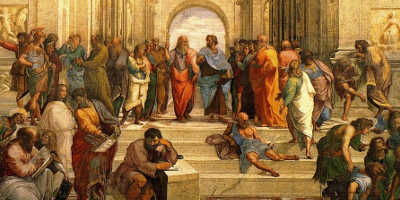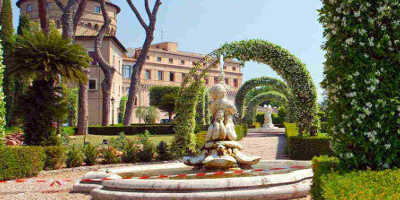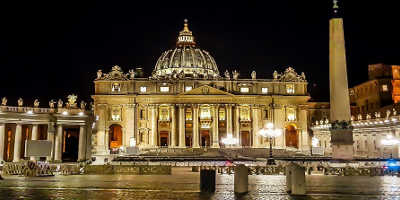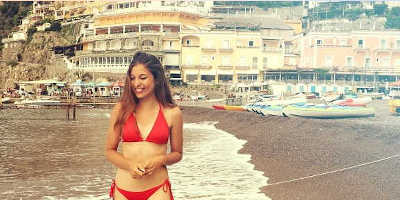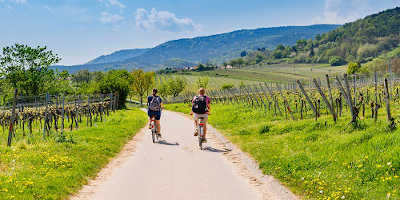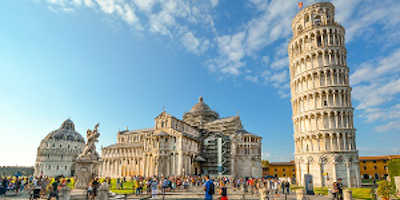What are the best art pieces to see in Vatican City?
The Vatican City has over 7 kilometres of art galleries, creating an endless trail of beauty, find out the best pieces to explore here…
The Vatican City is one of the greatest stops on your travels through Europe. Home to incredible culture, history, and of course art. The city has over 7 kilometres of art galleries spanning across the region, and Museums that are among the largest in the world. You can easily get lost within the never-ending hallways and buildings, and it can be easy to miss out on a lot of great attractions when your time eventually runs out. Therefore, we’ve made a list of some of the most important masterpieces you shouldn’t miss on your visit to Vatican City, highlighting where you can find them in bold. Whether you’re an art-lover, a history buff or simply sightseeing, this list is for you.
-
Sistine Chapel
No trip to the Vatican is complete without a visit to the iconic Sistine Chapel. Listed on everyone’s bucket list, the spectacular sight is one of the most well-known buildings in the entire world. Outstanding architecture highlighting the incredible artwork decorating the walls and ceilings. Stop here to marvel at the incredible frescoes covering the inside, painted by the famous artist, Michelangelo himself. The Sistine Chapel was both a success and a torment for Michelago. The paintings starting in 1508 and lasted until 1512. His design on the ceiling depicted 300 figures, all coming together to illustrate Man’s time on earth before the coming of Jesus Christ. As well, his later works within the chapel include ‘The Last Supper,’ which has played a significant role in past and presents art. You can find the Sistine Chapel in the Apostolic Palace, the official residence of the pope.
-
Raphael Rooms
Venture into the Palace of Vatican to visit the four Raphael rooms. Raphael, one of the top three Italian masters within the Renaissance period, painted a range of frescos within the rooms along with his pupils in the years 1508 to 1524. The Rooms consist of the room of Constantine, Heliodorus, Segnatura, Fire in the Borgo-known as the Stanze of Raphael. Only starting the pieces as a young 25-year-old, the project occupied the majority of Raphael’s career and was almost completed by the time of his passing in 1520. These rooms are one of the most visited parts of the Vatican, with both beauty and grand history which is significant for the Roman Catholic Church. To see the Raphael Rooms head to the third floor of the Vatican overlooking the southside of the Belvedere Courtyard. Don’t miss out on seeing the Room of Segnatura, this is perhaps the most famous of the four!
-
Giotto’s Stefaneschi Triptych
The Stefaneschi Altarpiece is a triptych created by the medieval painter Giotto di Bondone between 1320 and 1330. A triptych is a panel painting usually divided into three sections, or three carved panels that are hinged together and can be folded shut or displayed open. Giotto’s triptych served as an altarpiece for one of the altars of the Old St. Peter’s Basilica within Rome. It was commissioned by Cardinal Jacopo Caetani Stefaneschi, whom Giotto painted in at the feet of St. Peter’s throne. The portrait is regarded as one of the first realistic portraits in the history of painting. You can see the work at the Pinacoteca art gallery, a building once housed by Pope Pius XI. Inaugurated in 1932 the Vatican Pinacoteca is the newest addition to the Vatican Museums and was specially designed to enhance the artworks within.
-
Laocoön and His Sons
Regardless of whether you are interested in art, this striking marble statue is sure to take anyone’s breath away. The masterpiece depicts three figures, the Trojan priest Laocoön and his sons Antiphantes and Thymbraeus, being attacked by sea serpents. The figures are almost lifelike in size and detail, illustrating the contorted expressions of the figures, with every ripple of muscle protruding. It accurately represents their desperate desire to escape the entangling serpents, an amazing feat considering the solidity of statue. Being figures from Greek and Roman mythology, it is believed that this piece was copied from a bronze original that would have been made during ancient times. Visit the Museo Pio-Clementino within the Museums to see this great beauty.
-
St. Peter’s Basilica’s Saint Longinus
Listed as one of the largest churches in the world, St Peter’s Basilica lies on top of the Vatican Hill. The building itself is impressive, with the 17th century St. Peter’s Square standing at the Cathedral’s entrance. Inside the building lies an impressive array of art, most particularly Saint Longinus. Completed in 1638 by Gian Lorenzo Bernini, this statue towers over you as you marvel at the detail and strength shown in each moulded curve. Saint Longinus is believed to have been the name given to a Roman soldier who pierced the side of Jesus with a lance and who in medieval Christian tradition is described as a convert to Christianity. Bernini’s sculpture portrays Longinus’ billowing robes acting as a visual representation of his spiritual moment of converting to Christianity. The subject’s facial expressions also allude to Longinus’ physical, as well as spiritual awakening, as he regained his sight when he converted.


